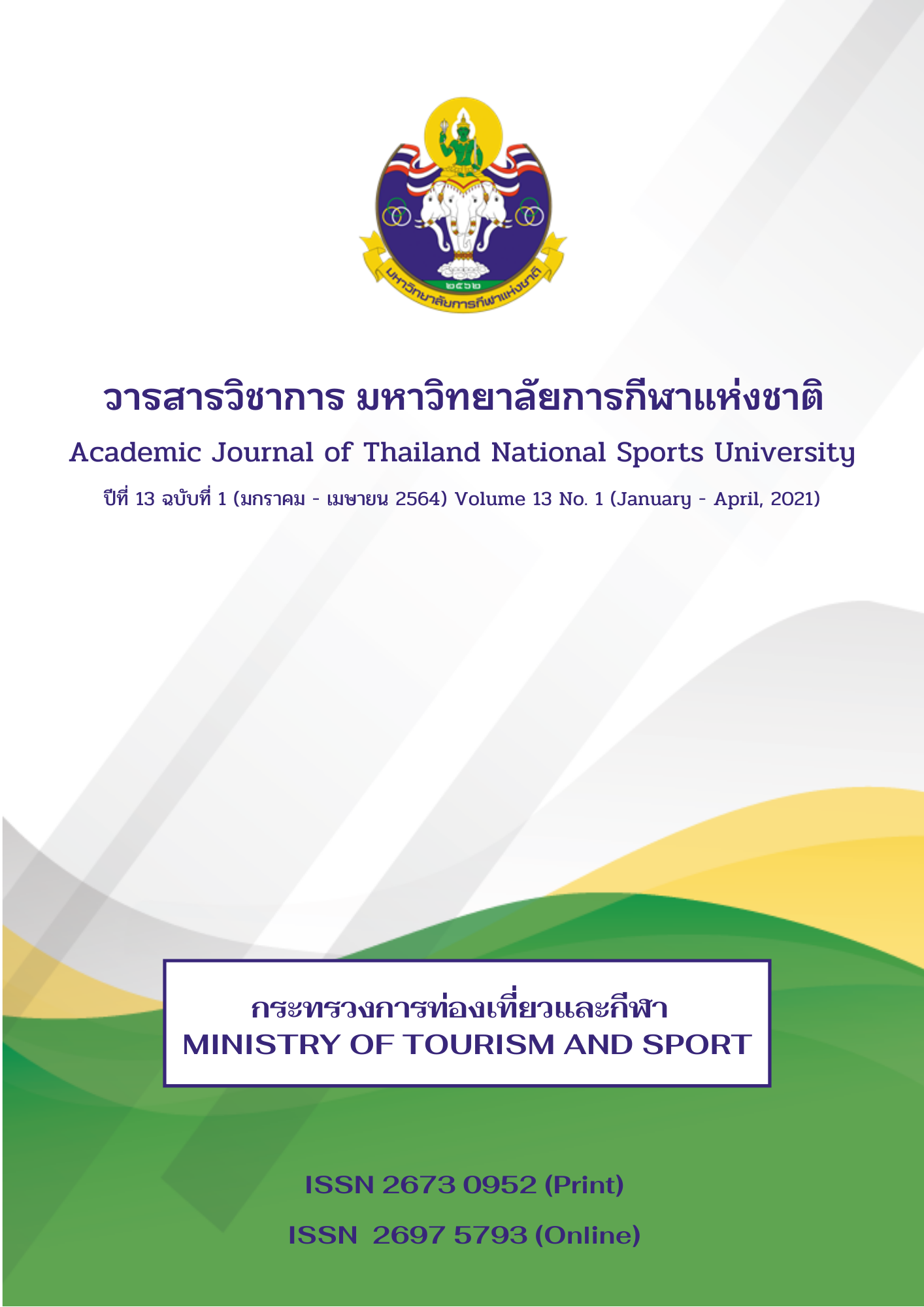COMMUNITY PREPARATION MODEL FOR PROMOTING ELDERLY EXERCISE IN PRIMARY CARE UNIT OF THE NATIONAL HEALTH SECURITY OFFICE (NHSO), BANGKOK
Main Article Content
Abstract
The study had 3 objectives, which were (1) to study the community preparation model for promoting elderly exercise in primary care unit of the National Health Security Office (NHSO), Bangkok, (2) to study the relationship of community preparation factors to promote the exercise of the elderly in the community and (3) to suggest the exercise of the elderly in the primary unit of the National Health Security Office (NHSO), Bangkok. The sample was selected from 420 elderly people, both males and females living in the community and a questionnaire was a tool for collecting data. The statistics analysis included percentage, mean, standard deviation; moreover, the t-test, f-test, chi-square test, (Correlation Coefficient, Multiple Hierarchy Regression Analysis and Structural Equation Modeling (SEM) were used for analyzing with comparison of different social factors and exercise promotion for the elderly.
The results of the study were as follows:
- Social factors influenced the elderly exercise, which was the need to participate in the exercise activities of the elderly at the statistical significance at the level of .05 and .01. The weight values of descending variables were social in community level, community level, organization level and interpersonal level.
- Comparison of social factors and promotion of elderly exercise in primary care unit of the National Health Security Office (NHSO), Bangkok, was found with the statistical significance at the level of .05 and .01. The weight value of the variables in descending order were planning, organization, personal, ordering process, coordination and location management.
3. The community preparation model for promoting elderly exercise in primary care unit of the National Health Security Office (NHSO), Bangkok included providing a fitness center with a variety of exercise activities and in accordance with lifestyle, facilities, shady atmosphere along with exercise equipment suitable for all age groups.
Article Details
The published article is a copyright of the Academic Journal of Thailand National Sports University. The passage appeared in each article in this academic journal is a perspective of each author which is not related to the journal. Each author is required to be responsible for all components of his/her own article. If there are any mistakes, each author must be responsible for those mistakes on his/her own.
References
Amornsriwatanakul, A., Nakornkhet, K., & et al. (2016). Results from Thailand’s 2016 report card on physical activity for children and youth. Journal of Physical Activity and Health, 13(s2), S291-S298.
Choowattanapakorn, & Tassana. (1999). The social situation in Thailand: The impact on elderly people. International Journal of Nursing Practice, 5(2), 95-99.
De Negreiros Cabral, K., Perracini, M. R., & et al. (2013). Effectiveness of a multifactorial falls prevention program in community-dwelling older people when compared to usual care: Study protocol for a randomised controlled trial (Prevquedas Brazil). BMC Geriatrics, 13(1), 27.
Deaton, A. S., & Paxson, C. H. (1997). The effects of economic and population growth on national saving and inequality. Demography, 34(1), 97-114.
Jitapunkul, S., & Wivatvanit, S. (2008). National policies and programs for the aging population in Thailand. Ageing international, 33(1-4), 62-74.
Joreskog, K., & Sorbom, D. (1996). PRELIS 2 user's reference guide: Scientific Software.
Thanakwang, K., & Soonthorndhada, K. (2011). Mechanisms by which social support networks influence healthy aging among Thai community-dwelling elderly. Journal of Aging and Health, 23(8), 1352-1378.
World Health Organization. (2014). Regional strategy for healthy ageing. Office for South-East Asia.
Yamane, T. (1973). Statistics: An introductory analysis. New York: Harper & Row.


